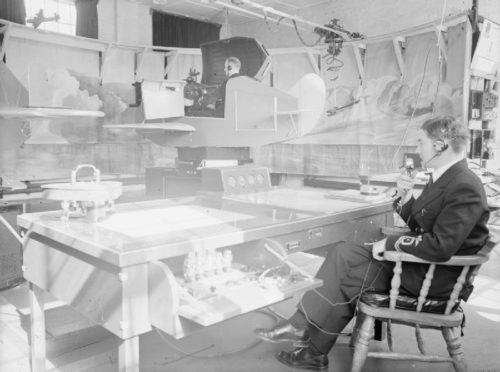This Low-Cost Innovation By IISc Scientists Can Be a Medical Game-Changer for India!
The Better India talked to Dr Shanthanu Chakravarthy, a doctoral scholar at IISc, who pursued the design, prototyping, control, haptics, and simulation of an endoscopy simulator.

Simulation started off as a test for pilots during the 1930s, has now evolved to simulate automobiles, bio-mechanics and even disasters. But the most interesting field for the future of simulations might be medical simulators.
Medical simulation involves simulating human patients or organs for training in medical fields. But the use and implementation in this regard are still debated due to the technology being relatively new.

The irony of the situation is that the simulators can only be perfected over time by producing more simulators and learning from the collected data. But with scepticism surrounding it, can medical simulation ever take off?
Finding a sweet spot in this irony is EndoMimyk, an endoscopy simulator that came about with collaboration between various IISc scientists and gastroenterologists.
The Better India talked to Dr Shanthanu Chakravarthy, a doctoral scholar at IISc, who pursued the design, prototyping, control, haptics, and simulation of an endoscopy simulator as part of his research in, which took the form of EndoMimyk.
Dr Shanthanu tells TBI, “The initial project concentrated on understanding haptics and associated topics in simulating minimally invasive surgeries.”.
Minimally invasive surgeries use a variety of techniques to operate with less damage to the body than open surgery.
The team concentrated on endoscopy and worked with doctors at the Asian Institute of Gastroenterology (AIG), Hyderabad, and other hospitals in Bengaluru, to create a simulation.
Endoscopy is a nonsurgical procedure used to examine a person’s digestive tract, using an endoscope, which is a flexible tube with a light and camera attached to it.

Dr. Shanthanu explains, “Endoscopy is a multi-modal clinical practice that requires considerable skill and training. It requires clinical knowledge, pattern recognition, cognitive processing and hand-eye coordination.”
He also explains about the current scene of endoscopy simulation, saying, “Inanimate endoscopic training modules or animal models currently employed for training in endoscopy are bulky, lack realism and do not provide monitoring, assessment, and feedback during training.”
This is where EndoMimyk excels by using the technology of haptics. He notes, “Endo Mimyk combines haptics with advanced simulation and instrumented tools to give high-fidelity, realistic and immersive training in gastrointestinal and bronchoscopy procedures.”
Hey, you may also like: Emergency in A Train? 23 Railway Stations in TN Will Now Have Medical Centres
Haptic interface technology recreates the sense of touch by applying force, vibrations, or motions to the user. Here, haptics recreates the complexity of the human body.

EndoMimyk not only consists of the haptic interface but VR-models, and instrumented tools which combinedly work to kinematically mimic all the motions necessary to simulate endoscopy.
We asked how the simulation can benefit medical services in India and Dr Shanthanu had this to say, “Among India’s population, 30 percent suffers from gastro-related ailments, while only 15 percent are affected by diabetes. India does not have enough qualified Gastroenterologists in the country.”
He continues, “Endoscopy simulator developed in India and made available for trainee doctors will have a large social impact by reducing the deficit in the number of practising gastroenterologists.”
It’s not only the technology but also its availability. With simulators costing upwards of Rs 1 crore, most current training methods involve patients for training.

“This method of training is dangerous and directly affects patient’s safety. There is a large gap in the initial steps of endoscopic training that could be filled by our cost-sensitive, realistic, virtual simulation platform,” briefs Dr Shanthanu.
The technology can be extended to ureteroscopy, cannulation, angio training, and vascular procedures. “Apart from training, we are extending the technology for procedure rehearsal. Finally, we envision our simulation technology augmenting every minimally invasive surgical procedure.”
The four founders of EndoMimyk, Shanthanu Chakravarthy, Nithin Shivashankar, Raghu Menon, and G Balaji are a team from IISc with a varied background, who aim to build world-class medical devices from India.
And EndoMimyk could change the perspective of medical simulators as they can be used in medical institutions for students to better understand the procedure and carry it out with confidence.
The funding for EndoMimyk came from the Biotechnology Ignition Grant (BIG) of BIRAC-DBT and Idea2PoC grant from the Government of Karnataka. Currently, Mimyk is incubated inside the IISc campus and leverages the deep R&D background of the institute.
Dr Shanthanu concludes, “We aspire to build tools that will empower surgeons and make every Minimally Invasive Surgery safe. Training and procedure-rehearsal platform is our first product. Going further, we have plans for building tracking and visualisation systems for Minimally Invasive Surgical procedures.”
(Edited by Shruti Singhal)
Hey, you may also like: Tea Seller-Turned-Mentor in Odisha Helps 18 Poor Students Make It To Medical School!
Like this story? Or have something to share?
Write to us: [email protected]
Connect with us on Facebook and Twitter.
NEW: Click here to get positive news on WhatsApp!

Similar Story

Would Your Parents Support You Taking Therapy? This Mental Wellbeing Survey Reveals an Unseen Change
An ITC Fiama survey on mental health shows 80% of Indians trust their parents to back them in seeking therapy, signalling a change in how its perceived by Gen Z, millennials, and their parents.
Read more >
If you found our stories insightful, informative, or even just enjoyable, we invite you to consider making a voluntary payment to support the work we do at The Better India. Your contribution helps us continue producing quality content that educates, inspires, and drives positive change.
Choose one of the payment options below for your contribution-
By paying for the stories you value, you directly contribute to sustaining our efforts focused on making a difference in the world. Together, let's ensure that impactful stories continue to be told and shared, enriching lives and communities alike.
Thank you for your support. Here are some frequently asked questions you might find helpful to know why you are contributing?


This story made me
-
97
-
121
-
89
-
167












